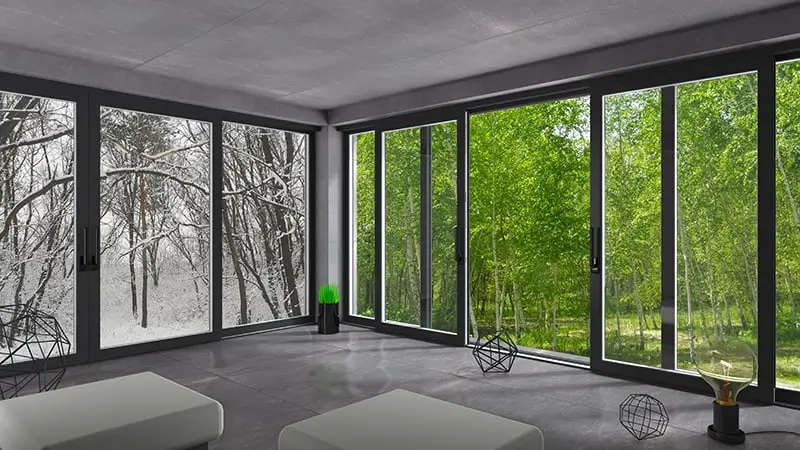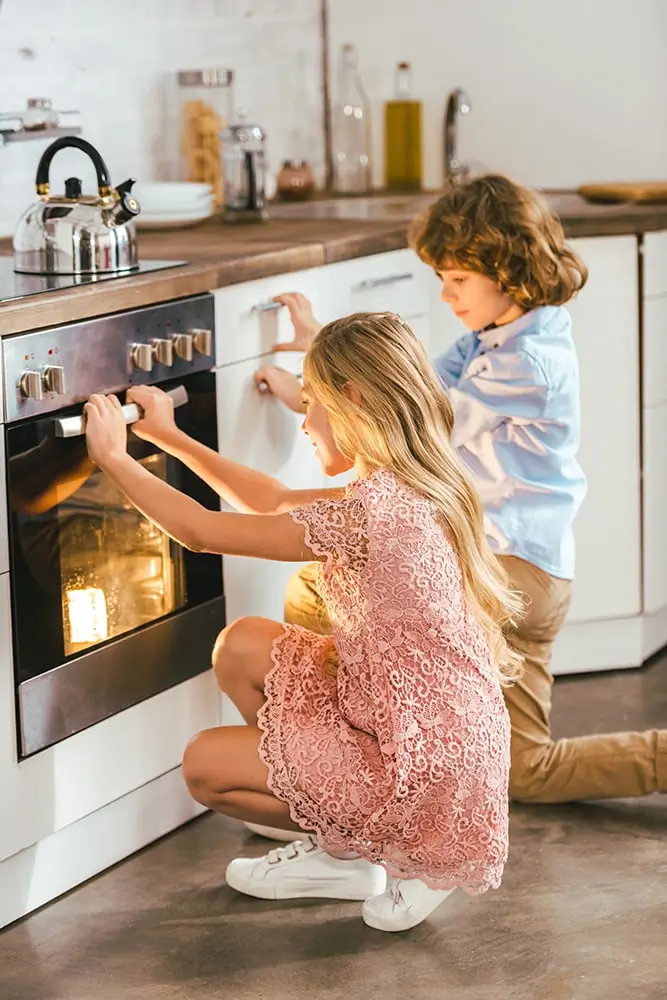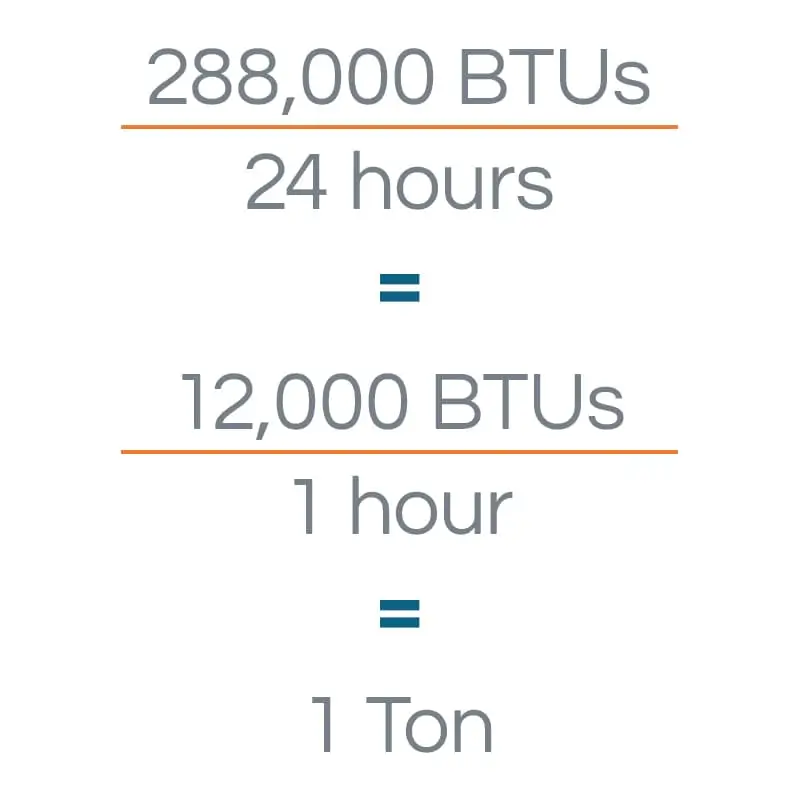How HVAC Equipment Is Sized
What Size Fits Your Needs?
Before you can understand how HVAC is sized, first you need to know some basic energy science. Energy takes on the form of heat in our environment. Energy, or heat, is constantly being transferred from atom to atom, seeking an even state.
Why does this matter for heating and cooling equipment?
When your space is being air conditioned, what is happening is a concept called heat transfer. The cool air is helping reduce the temperature in the space. It does this by forcing a heat transfer between the cool air from your A/C and the warm air and objects in the space. Your air conditioner's job is done when your space has reached its setpoint–when there is an energy balance in your space.
So, how much energy must be added to a space to achieve that balance? A calculation must be performed. This is called a heat load calculation. Sometimes this term is shorted to load calculation or even just "the load."
A load calculation will tell us how much energy needs to be transferred in order to keep occupants comfortable.
Learn Your Load Calculation
Understanding HVAC Load Caculations
A load calculation is a determination of how much energy is needed to keep a space at the desired temperature. Ultimately, it will tell us how to size our HVAC system. Multiple variables are incorporated to determine a heat load. The most important is the total square footage of a home. In addition, there are a couple of key pieces of information to perform an accurate load calculation:
What is the desired space temperature?
What are the maximum outdoor temperatures?
How much energy is being transferred to or from the space?
How much energy is being generated within the space?
This information will be different during the summer and winter, so information must be collected for both.
Two different load calculations are made: one for heating and one for cooling.

Desired Space Temperature
First, let's look at desired space temperatures. Guidance from industry groups, such as the ACCA®, recommend indoor temperatures of 78 degrees Fahrenheit. However, the average person doesn't set their thermostat quite that high.
Actually, there is scientific research on the topic of thermal comfort. To summarize, multiple factors influence whether you feel hot, cold, or just right in an indoor space.
Most people set their HVAC to indoor temperatures between 72-75 degrees. Some people like to keep their home cooled to 65 degrees.
No matter what your preferred temperature setpoint is, it is critical to select the correct desired space temperature for a load calculation. If a load is calculated with a desired space temp of 78, there is little chance it will be able to reliably cool to 65 throughout the hottest days of summer.
Outdoor Conditions
Next is maximum outdoor temperatures. A home in Michigan and a home in Texas have very different heating and cooling needs. That's because they experience different outdoor conditions.
So, this must be taken into account for the load calculation. Generally, professionals use climate data and select maximum temperatures based on their professional opinion.
Sometimes, professionals use an average of the last 20 years. Other times, they use the maximum temperature experienced in the last 5 years. The worse the conditions, the larger the load will be. No matter what your preferred temperature setpoint is, it is critical to select the correct desired space temperature for a load calculation. If a load is calculated with a desired space temp of 78, there is little chance it will be able to reliably cool to 65 throughout the hottest days of summer.


Heat Loss
A critical component of how an HVAC is sized is energy transfer. Energy transfer is always happening in your home.
Because of fundamental HVAC science, your home will be looking to transfer energy and balance itself out with the outdoor air that surrounds it.
So, if your air inside your house is warmer than the outside air, energy will be transferred. This is sometimes described as heat loss.
Heat loss, or energy transfer, can happen through roofs, windows, walls, and even from your floor to the ground. Depending on how well your home is insulated, the rate of energy transfer will be faster or slower.
This rate of energy transfer is accounted for by incorporating insulation in the calculation. If you have better insulation, energy is transferred more slowly. The result is that a smaller HVAC system can be used to cool the same area.
Heat Gain
The last thing that is incorporated into a load calculation is heat gain. As you can probably guess, heat gain is the energy that is being added to the space. So, what adds heat to your home?
- Appliances that generate heat like stoves, dishwashers, and clothes dryers are accounted for.
- People! Our average body temperature is 98.6ºF, so you can bet that energy is being transferred from our body to the air around us–that's heat gain.
- Lighting generates heat, although more efficient lightbulbs like LEDs produce much less heat than older incandescents.
- Electronic devices also generate heat. Everything from your television to your smartphone adds heat to a space.

Getting to a Number
Once you have energy values for all the different factors that go into a load calculation, a number will be generated that represents how much energy is required to keep your space comfortable.
This number, called "the load" will be used to choose a piece of equipment with a matching capacity. This is how an HVAC system is sized!
Note that the individual pieces of your load vary day-to-day. For example, your home's load may be exactly the same during a gathering of 20 people in your home on a mild evening and being in your home alone on the hottest day of the year while baking cookies and doing laundry.
So, we can summarize that a load is an educated and calculated guess of the energy that will be needed.
Why Your HVAC Load Changes Over Time
As we discussed in the last section, HVAC loads change every instant. But they can also change dramatically over time. Here are a few reasons:
REDUCING HEAT LOSS
Replacing windows, sealing openings, and improving your insulation will all reduce your heat loss.MORE HEAT GAIN
If your HVAC was installed more than 10 years ago, your equipment probably wasn't sized for tablets.DETERIORATION
Over time, your home will have more cracks and spaces, which means an increase in heat loss.ADDITIONS
Renovating an attic or garage into a finished space adds more square footage, which means more air that needs to be heated or cooled.BEHAVIOR
Forgetting to turn off heat-generating items like televisions, lights, and curling irons increases the energy required to cool a space.So it's possible that while the load in your home was 3 Tons when your old air conditioner was installed, the load today may be 4 Tons.
See How Your Load Has Changed
What Is a "Ton" of HVAC?
Energy is measured in British Thermal Units, or BTUs. But energy on its own is not helpful, we need to understand the rate at which a device will transfer energy.
So, the measurement that is used in HVAC is BTU per hour. One ton of cooling is equal to 12,000 BTU/h.
This figure is derived from how much heat is required (288,000 BTU) to melt one ton of ice in a 24-hour period.
288,000 BTUs/24 hours = 12,000 BTU/h = 1 Ton.
In the HVAC industry, professionals and manufacturers alike use tons (or "tonnage") interchangeably with BTU/h. You might have one person quote you for a 60,000 BTU/h unit, and another person quote you for a 5-ton unit. They are the same thing! But with less digits, tons are usually easier to talk about and communicate with.
No matter what your preferred temperature setpoint is, it is critical to select the correct desired space temperature for a load calculation. If a load is calculated with a desired space temp of 78, there is little chance it will be able to reliably cool to 65 throughout the hottest days of summer.
